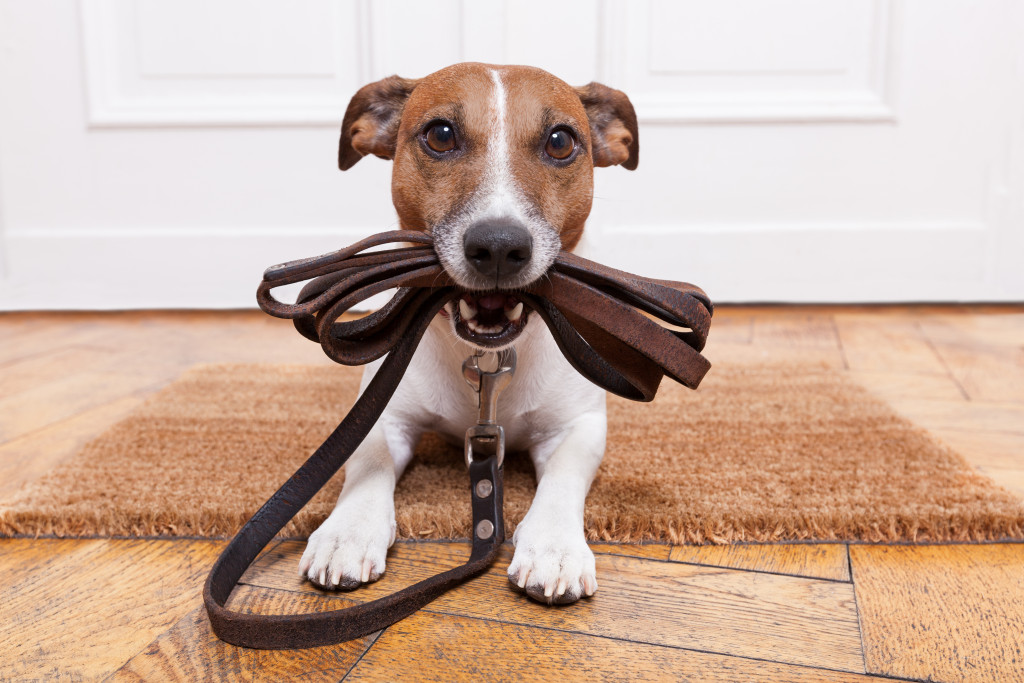Moving into a new house can be difficult for everyone in the family, including your pets. Pets are creatures of habit, and they may feel anxious or confused when disrupting their routine. You can do a few things to help your pet adjust more quickly to the change. Here are some tips.
1. Give your pet plenty of time to explore their new home.
Let them sniff around and get comfortable with the new surroundings. Most animals like to have a place to call their own, so try to set up their bed or crate in a quiet spot. If you have a cat, set up a litter box in an accessible place.
You should also give your pet time to adjust to the new people in their life, if there are any. If you have young children, introduce them gradually and let your pet approach them on their terms. You may need to keep a close eye on interactions first to ensure everyone is comfortable.
Some pets may never warm up to new people, and that’s okay. Just do your best to make sure everyone is safe and respected. Talk to your veterinarian if you’re worried about your pet’s behavior.
2. Think of their safety at all times.
Many animals like to hide when stressed, so it’s essential to ensure your home is safe for them. Look for potential hazards like chemicals, medications, and small spaces they could get stuck in. If you have an outdoor pet, familiarize yourself with the new neighborhood and ensure no dangers are lurking around.
If you have a pool, install a fence to keep your pet safe. Many types of easy DIY pool fences on the market will do the trick. You can also get creative and use potted plants or baby gates to create a barrier. Always supervise your pet around water, even if you have a fence.
Some homes also have pests like mice or rats. If this is the case, take measures to keep your pet safe from them. Set up traps or hire an exterminator to get rid of the problem. Always look for signs of pests, such as droppings, and take action immediately.

3. Keep their routine as normal as possible.
Pets thrive on routine, so try to keep mealtimes, walks, and playtime as close to the old schedule as possible. If you can’t stick to the same routine, try to be as consistent as possible. For example, if you used to walk your dog in the morning but now have to walk in the evening, try to keep the same general time frame.
Pet owners often mistake thinking their pet doesn’t need as much exercise in their new home because it’s smaller. However, this isn’t the case. Pets still need to burn off energy, so don’t skimp on walks or playtime just because the space is smaller.
You should also keep an eye on your pet’s behavior and look for any changes that may indicate they’re having difficulty adjusting. If you notice your pet is acting differently, consult your veterinarian. They may be able to offer advice or recommend a course of action.
4. Be patient.
Moving is a big adjustment for everyone, so it’s essential to be patient with your pet as they get used to their new home. It may take some time for them to feel comfortable, but eventually, they’ll settle in and make themselves at home. You can help them through the transition by offering plenty of love and patience.
Patience also goes a long way when it comes to training your pet. If you’re working on obedience or tricks, be patient and don’t get frustrated if they don’t seem to be getting it. They may just need more time to adjust.
Some pets may never adjust to a new home, no matter how much time and effort you put in. If this is the case, you may need to consider finding a new home for your pet. Ultimately, you want what’s best for them, and if they’re unhappy in their new environment, it may be better for them to start fresh somewhere else.
Moving to a new house can be stressful for you and your pet. However, there are things you can do to make the transition easier for everyone. Following these tips can help your pet adjust to their new home more quickly and smoothly. If you have any concerns, be sure to consult your veterinarian. They can offer advice and help you troubleshoot any problems you may be having.
